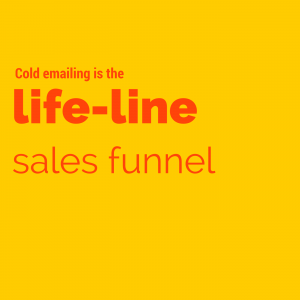For any SaaS sales team, cold emailing is the life line of the sales funnel. For organisations like ours, with smaller ticket size deals, the cold emailing channel has to work, otherwise the CAC vs LTV balance can go for a toss.
Every entrepreneur, whether in sales or not, is selling something. If you are pitching investors, you are selling a vision and a team; if you are mailing potential hires, you are pitching work environment and potential gains; if you are mailing a potential mentor, you are pitching to his altruistic or “giving back to the society” tendencies. For any cold email to work, it is essential that you understand how a conversation with a stranger on a digital platform is structured.
This sounds fairly simple doesn’t it? We have tried so many variants of cold emailing at Betaglide and the truth remains, in most cases it doesn’t work. Imagine yourself in your customer’s shoes and assess “Why would I ever be interested to read this email or even opening this email?”. There are multiple ways an email can be structured and different ways work for different people. For us, most things didn’t work but thankfully, a few did! Here’s the outline and our learning behind it and how we approached it.
- Subject Line: This is the first line your receiver is going to see and is going to make the decision whether to open the email or not in a split second. The key here is to respect your customer’s time. S/He receives hundreds of emails every day and what makes your email so special for her/him to open it? This is the questions you should be answering in your subject line. Also, don’t make it generic or loaded with data. Email is extremely personal and you would do good to remember that. For us, subject lines like “Increase/boost your user retention”, “Decrease your churn with retention.ai” just didn’t work. We had less than 5% email open rate with such subject lines. That is pretty bad when you are trying to scout for beta users who need to trust you and your product to become an early adopter. What instead worked was “Hey John, a message from Manan”, “John – Become your app’s rockstar”. The subject line should be catchy enough to garner curiosity in the reader’s mind for her/him to decide to open the email.
- Introduction: This is one of the most trickiest part which took us a whole bunch of experiments to crack. The first couple of lines in the email is going to decide whether the receiver reads it further or not. With most automation tools, now you can personalise emails that you send. It is a no-brainer to start with “Hey John or Hi John” instead of “Dear John”. Especially if you are selling to C level executives and product managers. This makes them immediately comfortable and as they have already seen the salutation multiple times in their regular email conversations. The next part is first few lines of the email. This took some really hard thinking to crack. Most of the times, we are eager to say something about us but that is a wrong way to look at it. The first few lines should be about the recipient of the email! Research about the person/company that you are sending the email to. Congratulate them if they recently got a promotion or if their company recently achieved a milestone. This immediately grabs her/his interest in your email and decides to read on. We find tools like Linkedin sales navigator and Rapportive ideal for such research! If you a know a better tool for this, do tell!
- The pitch: After all, you are writing this email to sell him something. In his book, “Zero to One”, Peter Thiel explains that best sales process hardly ever looks like sales. We initially made a mistake of writing about our product and its features in this section. No one cares a penny’s worth about what your product does! Make the pitch about her/him! What are the problems that your customer is facing and how you can solve them along with a number. If you can not pitch your product in just two lines, you really need to work on it. We used to have an eight line pitch! Never worked! Talking so much about your product just seems very salesy! The point is that your pitch should not sound salesy but something that can genuinely help the recipient achieve her/his goals. That is your pitch perfect. Remember, the purpose of the first email is to start a conversation about the problem that your customer faces and then slowly convincing her/him that you are the man to solve it!
- Closing: This is the simplest part and most people do it right. If you are mailing directly to the person who is going to use your product, ask for a “brief time for a call”. If you are mailing founder/VP who might not be the primary user of your product, ask them to connect you to the “relevant person in the organisation.”
Email, when done right can become the cornerstone of your sales process and open the floodgates of hot leads! One might say that the approach is time consuming for you have to do research on each customer you are sending the email to. But remember, sales is about relationships and trust you build with the stakeholder. Invest that time for the clients that are essential to your growth and it is going to be worth it!
Guest blog post by Manan Shah, Retention.ai













